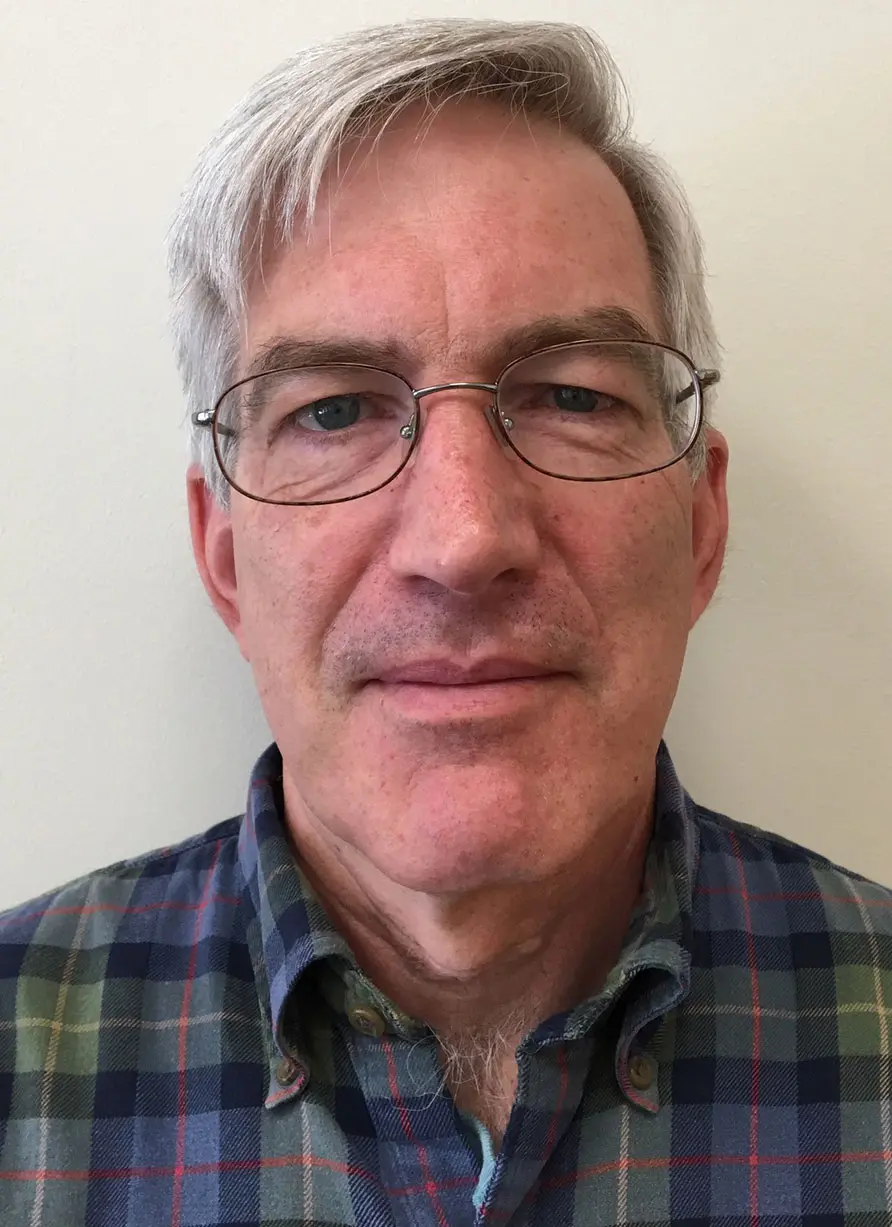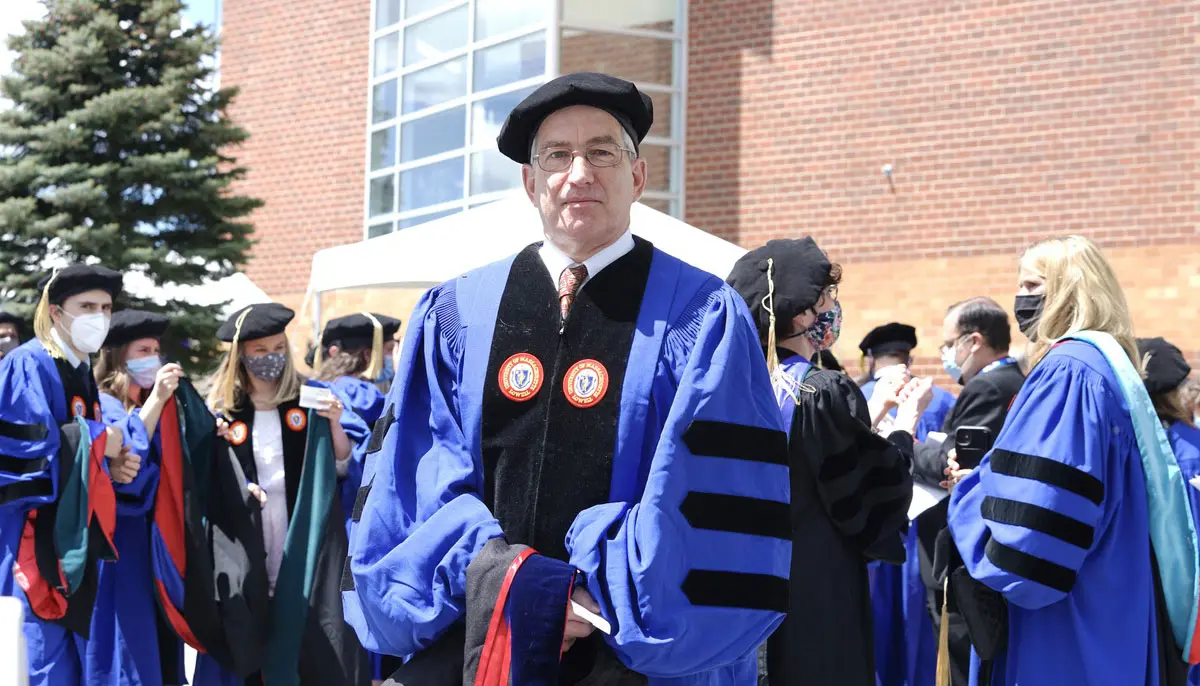Stephen Johnson ’21 had given plenty of presentations in his 35-year career as an engineer and manager at General Electric. But he still got butterflies when defending his doctoral dissertation in mechanical engineering.
“I was probably more nervous for this than I had been for a long time. It’s a big deal and you want it to go smoothly,” says the 66-year-old Johnson, who began pursuing a Ph.D. from UML’s Francis College of Engineering in 2017 after retiring as manager of the advanced manufacturing team for GE’s wind energy business.
Getting a Ph.D. is “something I always wanted to do, but it didn’t quite fit my career path,” says Johnson, a native of Marblehead, Massachusetts, who who holds 23 wind turbine patents. He studied mechanical engineering (bachelor’s degree from Cornell University in 1977; master’s from Cleveland State University in 1980) before getting his MBA from the University of Chicago in 1982.
That’s when he joined GE, spending the first 15 years of his career in the gas turbine industry. His work took him and his wife, Stephanie, to Hong Kong for five years, where he managed power plant proposals in support of GE’s sales efforts in the Asia Pacific region.
“Living overseas and adapting to the culture is a lot different than visiting. And we were there when Hong Kong was being handed back to China in 1997, which was an interesting dynamic,” he says.
Johnson transitioned to GE Aviation in Lynn, Massachusetts, working for a decade as sales director for CF34 jet engines in the Americas. In 2007, he joined GE Wind Energy in Greenville, South Carolina, leading a global team of 20 engineers on the supply chain and manufacturing sides of wind turbine production.
In 2012, two faculty members from UML’s Mechanical Engineering Department — Christopher Niezrecki and James Sherwood — visited Johnson in Greenville and told him about a new wind energy research consortium they were putting together called WindSTAR.
"I felt it was a good opportunity for GE to participate,” says Johnson, who was able to get GE Renewable Energy onboard. “We got a lot out of it.”
When Johnson retired in 2017, he asked Sherwood, then associate dean of graduate studies, if people in their 60s ever came back to school. Before Johnson knew it, he was pursuing his Ph.D. at UML — with Sherwood as his advisor.
For his doctoral work, Johnson developed a software tool that uses a “techno-economic model” to show wind blade makers whether and how much time and money can be saved by adding a new automation technology to the blade manufacturing process.
“It’s fundamentally done and operable, and now we’re in the process of deploying it so the world can be aware of it and start using it,” Johnson says of the software, which will be available for free through the National Renewable Energy Laboratory.
While working on his Ph.D., Johnson started teaching a class, Wind Energy Fundamentals, as an adjunct faculty member, something he hopes to continue.
“I enjoy doing it. Even though I’m a wind energy guy, it’s been educational for me in some ways. The lifelong learning approach keeps you mentally on top of things,” he says.
Johnson also started his own consulting business, Windward Turbine Energy, which he expects to ramp up now that more offshore wind farm projects are being approved in New England.
“I want to help people push the technology, because we have a long way to go to get to our carbon-neutral world,” he says. “Anything I can do to help at this point is what I’d like to do.”


